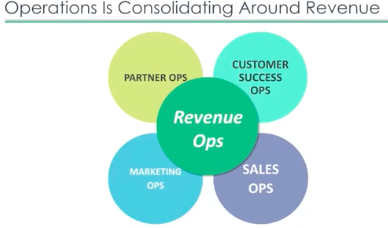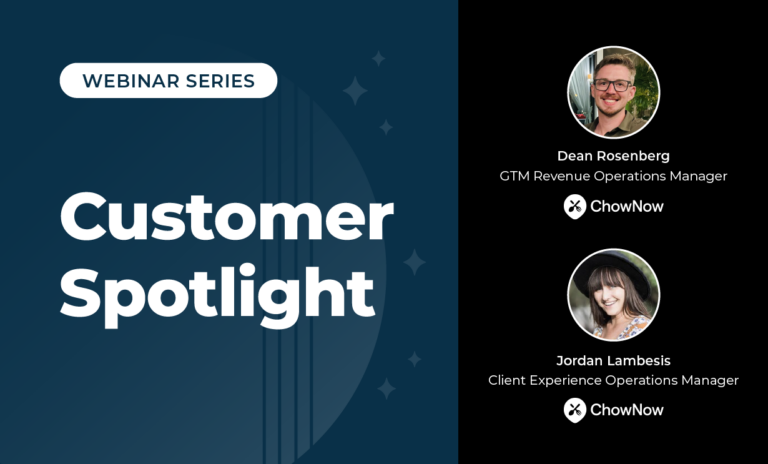I’ve said it before, and I’ll say it again. Sales Development Representatives (SDRs) play the most important role in the revenue lifecycle.
I’m sticking to my position, and here’s why:
On the Revenue team side of the house, as a function, we have nearly non-stop conversations regarding the need to align Marketing and Sales. It’s a topic at every site with a blog, every conference with keynote speakers and panels, and at most every company’s strategic go-to-market (GTM) planning sessions as we head into 2022.
Traditional alignment issues between Sales and Marketing generally fall into two buckets: 1) Sales wants more leads, and 2) Marketing wants to ensure the leads it has so painstakingly – and expensively – sourced are followed up with by Sales.
The embodiment of this alignment between Sales and Marketing is, of course, the SDR. The SDR receives the handoff of a lead from Marketing, and as such is the first Sales touch at the top of the funnel. Then, the SDR is tasked with the accountability to filter marketing qualified leads (MQLs) into meetings. Lastly, SDRs are perfectly positioned to provide a valuable feedback loop to Marketing on its campaigns and promotions.
The plight of the SDR
I started my career in Sales, as an SDR, and anyone who has sat in a similar seat knows that if there is one universal truth in Sales, it’s probably “all leads are not equal.”

That statement might come off as sacrilege to some, particularly those in the Marketing function. But, it tends to be true. As leads get handed over, some prove to be very valuable; others prove to be not so valuable – students, media, buyers without budgets, prospects outside your ideal customer profile (ICP), and even sometimes competitors.
Additionally, SDRs are often handicapped with what I’ll call “bad data.” For example, an SDR might have a lead that should have been routed to another rep covering the territory or industry vertical. Or, an SDR might receive a lead that is connected to an Account that has an open Opportunity being actively worked by an Account Executive. Maybe worse of all, an SDR might reach out to a lead at a customer account, whereupon they start treating an existing customer as a spanking new prospect.
Talk about poor customer experiences!
The SDR is right there at the handoff between Marketing and Sales, in the thick of it all, and if that handoff doesn’t go smoothly, then the SDR is not set up for success. Downstream, that means the Account Executive has limited chances to close the deal, and even further downstream, Customer Success gets fewer chances to further nurture valuable customer relationships.
Unfortunately, in too many instances at too many organizations, Sales and Marketing management doesn’t know enough about the plight of the SDR team to make them more successful.
How Revenue Operations can empower SDR success
The Operations functions at leading-edge organizations are consolidating around Revenue, giving birth to Revenue Operations or RevOps. With that consolidation, RevOps become tactical owners of the customer journey.

RevOps builds the GTM engine, and it determines how best to scale for growth. A key area of focus is empowering the SDR team.
The first task for RevOps is to collaborate with Marketing and Sales leadership to prioritize GTM campaigns and motions, and, subsequently, prioritize the leads acquired through those channels.
With leads prioritized, RevOps can assign a service level agreement (SLA) accordingly, and measure SLA performance of the teams and representatives who are tasked with follow up.
Prioritizing leads allows for the formulation of a big-picture view of an organization’s lead flow and guides capacity planning. Do we need to increase the size of our SDR team to handle the lead load? Or, are SDRs “going hungry” because there are not enough high-priority leads?

At LeanData, we prioritize leads with the assignment of a P1, P2 or P3 classification. P1s are leads coming through activities like a demo request, an AppExchange download or a contact now form fill. These are self-qualified hand raisers, and they want, and expect, immediate attention and follow up. We aim to do just that by fast-tracking the lead to the proper person.
RevOps ensures leads are handed off to the right reps. An inbound lead routes to an SDR, while a lead at an Account with an open Opportunity routes to the appropriate Account Executive. Customers, of course, go to the correct Customer Success Manager.
For that SDR handoff, we use integrated Slack and email notifications to alert the rep. It’s not just a notification of a lead, but also the campaign where the lead came from. That campaign context is critical. I don’t want an SDR to lead first-touch talking about speed to lead when the prospect came in through an account-based marketing campaign.
If the lead is interested in apples, let’s give them apples.

At the same time as routing leads, we empower the SDR team with the powerful automation of Sales Engagement Platforms (SEPs) – at LeanData, we integrate with both Salesloft and Outreach.
Two things are important here. First, teaming with SDR leadership and Demand Generation, RevOps ensures SEP sequences/cadences are pre-built and continuously measured and evaluated for improvement. A rep never has to start from scratch.
Secondly, RevOps facilitates the handoff of the lead from Marketing to the SDR complete with all the contextual information an SDR needs to make a first-touch contact that is relevant to the lead. For example, if the lead has entered through a demo request, it gets routed to the Outreach sequence loaded with a demo context. Conversely, if the lead entered via the AppExchange, the Salesloft cadence reflects that customer journey.
P1s require an immediate response – we measure SLAs in minutes. P2s, on the other hand, don’t require such a quick response time and, as such, allow for more personalization in the SDRs outreach.
At LeanData, P2s might be leads who have attended a live event or viewed a webinar on demand. Typically, RevOps assigns P2s to SDRs with a 48-hour SLA. While they are routed into SEP sequences/cadences, an SDR has some time to personalize their message – particularly that first 20 percent of the template message – to make their outreach resonate even more. Jeremy Donovan, my former colleague at Salesloft, has written a wonderful blog post about personalization that I recommend you review.
Prioritization of leads is a key enabler of SDRs, and the result is an improved experience for the lead at every stage of the buyer journey.
Introducing Sales Development Ops
We’ve already covered how the GTM Operations functions have consolidated around revenue. With the importance of SDRs and their success to the Revenue team, a new functional member is increasingly being added to the Ops family – SDR Operations.
SDR Ops runs point for both the Demand Generation and Sales Development teams, and is tasked with ensuring SDRs execute efficiently throughout their part of the revenue lifecycle. It’s all about empowerment, with a keen focus on the ensuring the following conditions:
- Leads are routed to the right reps at the right time
- Automation processes are working
- Outgoing messaging is contextual
- Everything is tracked, logged, measured, evaluated and reported
In those organizations who have added Sales Development Ops to the mix, they’re aiming to provide all the necessary ingredients – the tools and the processes – to make SDRs successful in making first contact with the lead, setting and conducting introductory meetings, and guiding the customer down the buyer’s journey to closed/won and beyond.
Summary
In the relay race that is lead management within a Revenue team – passing the baton, so to speak, from Marketing to SDRs, from SDRs to Account Executives, and finally, from Account Executives to Customer Success Managers – it’s important to never lose track of the baton, the lead.
In track and field, if you drop the baton, you lose the race. In GTM motions, the same applies: drop the lead, you lose the prospect.
With SDRs responsible for leads after the initial handoff, they become the most important role in the race to win the customer. Within the Operations functions, RevOps and Sales Development Ops need to ensure their every success!







